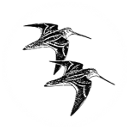Observations

March – April 2017
Following the failure of strong pairs of Mute Swans to establish territories in the South lagoons, refugee non-breeders started to arrive and had reached a total of 49 by the end of April, close to our site record of 50 in a very cold January 1979! Gadwall increased to 182 and Shoveler reached a new site record of 178.
A single Bittern, believed to be our ‘rescued’ bird, was seen on at least three dates in both months along with other unconfirmed sightings by observers of unknown abilities.
Raptors were present in good numbers, with up to eight Buzzards, five Red Kites, three Sparrowhawks, three Peregrines, six Kestrels and a solitary Marsh Harrier. Our first returning Hobbies arrived just before the end of April.
Seventeen Jack Snipe in March was equal to our second best count on 20th January 1962 and has only been exceeded by the count of 20 on 5th March last year. Our first Little Ringed Plover returned in March was followed by up to three in the following weeks. It was an excellent period for less common waders, with three records of single Dunlins, a Whimbrel, two Grey Plovers and a Bar-tailed Godwit on 30th April. The Grey Plovers are only the tenth record for the site and only the second time that more than one has occurred.
A Little Gull was a nice find, as were one or two Yellow-legged Gulls on three dates, and records of one and two Mediterranean Gulls. A Common Tern arrived in early April following which numbers slowly increased to eight by the end of the month.
The first Swifts, Sand and House Martins and Swallows arrived on typical dates.
Ravens made a good showing with two birds being seen on three dates.
Eighteen Chiffchaffs in March were probably a mix of wintering birds, returning continental birds and possibly some returning breeders, certainly the ‘tristis’ seen the following day must have been in one of the first two categories, but an arrival of 20 in April surely marked the return of our breeding population. A Willow Warbler turned up in early April but spring passage was very poor thereafter. Returning Blackcaps, Whitethroats, Lesser Whitethroats and Garden Warblers and a Grasshopper Warbler were all noted. A Sedge Warbler was unusually early at the end of March, and a Reed Warbler on 2nd April was our earliest ever. Meanwhile, our winter thrushes departed by the end of March.
A Nuthatch was an unusual sighting, as was a singing male Nightingale. A Greenland Wheatear was photographed by the RSPB, and a Stonechat was in the meadows. Single Yellow Wagtails were seen on three dates, but a really unexpected record was of two White Wagtails. Meadow Pipits moved through with up to 28 counted, and a Water Pipit was present on four dates in March.
One or two Siskins on four dates in March was a very poor passage, but not a single Lesser Redpoll has been recorded on site this year. However up to five Linnets on several dates may show a slight recovery. Finally up to 11 Yellowhammers roosting in the meadows left a bird apparently holding territory and singing in April, which may also show an encouraging trend.
As always, get the full details promptly from our Bulletin, free to all Friends.
